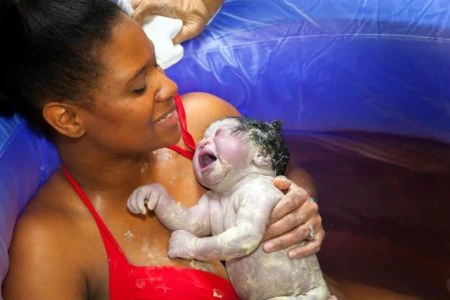Some view it as a necessity, while others see it as a personal choice that should be delayed. We are here to break down the procedure, the benefits, and the risks so you can make an informed decision for your baby.
What Is Circumcision?
Circumcision is a surgical procedure to remove the skin covering the tip of the penis. Doctors perform this common procedure on newborns, usually within the first 10 days of life.
The process takes about 10 minutes. The doctor applies a local anesthetic to numb the area. They place a special plastic ring or clamp on the penis to protect the glans and remove the foreskin. Older boys and men can also undergo the procedure, though it is more complex and typically requires general anesthesia.
Circumcision Statistics
Circumcision rates vary widely across the globe based on culture, religion, and medical trends. Globally, experts estimate that about 37 percent of males are circumcised (1).
Here is how the numbers break down by region:
- United States: About 70 percent of males in the U.S. are circumcised. The Midwest has the highest prevalence at roughly 70 percent, while the West is lowest at around 35 percent. Rates dipped in the early 2000s but have risen slightly in recent years (2).
- Canada: The national rate is approximately 31 percent. However, this varies significantly by province, with Alberta at 44 percent and Newfoundland close to zero (3).
- Asia: Countries with large Muslim or Jewish populations, such as Israel, the Philippines, and Saudi Arabia, have rates exceeding 90 percent. Other parts of Asia have much lower rates.
- Africa: North Africa has high rates due to religion, while Central Africa practices circumcision as part of tribal rituals. The continent’s overall rate is about 62 percent.
- Europe: Most European countries report that less than 20 percent of males are circumcised.
- Australia and New Zealand: Australia saw high rates in the 1950s, but that number has dropped to around 26 percent (4). New Zealand remains under 20 percent.
Why Parents Choose Circumcision
Parents usually choose circumcision for social, religious, or medical reasons.
Here are the most common cultural and social drivers:
- Religion: Families practicing Islam and Judaism circumcise male children as a religious obligation.
- Culture: Various African and Aboriginal groups, as well as some cultures in the Americas, perform circumcision as a rite of passage into manhood (5).
- Social Conformity: Parents often want their son to look like his father or peers. This “locker room” factor is a frequent reason for the procedure.
- Aesthetics: Some parents simply prefer the look of a circumcised penis.
There are also specific health motivations for the procedure:
- Hygiene: Many find a circumcised penis easier to clean since there is no foreskin to retract.
- Urinary Health: The procedure lowers the risk of urinary tract infections (UTIs) in infants.
- Disease Prevention: Circumcision decreases the risk of contracting certain sexually transmitted diseases (STDs), including HIV.
- Cancer Prevention: It lowers the risk of penile cancer later in life.
Doctors may also recommend circumcision to treat specific medical conditions:
- Balanitis: This is an infection of the glans that causes swelling and pain. Circumcision can prevent recurrent cases (6).
- Balanoposthitis: This condition affects intact males, causing inflammation of the glans and foreskin along with discharge. It can lead to scarring (7).
- Phimosis: This occurs when the foreskin is too tight to be pulled back over the head of the penis (8).
- Paraphimosis: This is a medical emergency where the foreskin gets stuck behind the glans and cuts off blood flow (9).
Pros of Circumcision
Circumcision offers several documented health advantages for babies and men.
1. Reduced Risk of Urinary Tract Infection
Intact boys under one year old are 10 to 20 times more likely to get a UTI than circumcised boys. This statistic is a major factor for many parents (10).
Bacteria like E. coli tend to colonize under the foreskin, especially in infants under six months old. Removing the foreskin eliminates this hiding spot (11).
While UTIs are generally treatable, recurrent infections can lead to kidney problems. Circumcision significantly lowers this risk.
The overall risk of urinary tract infection in men is still low. For example, for infants 0 to 1 years old, the risk of an intact male getting a UTI is 1.3%, while a circumcised male is only 0.3%. That difference is very small between the two. (12)
Editor's Note:
Caitlin Goodwin, MSN, RN, CNM2. Reduced Risk of Penile Cancer
Penile cancer is rare, affecting about 2,320 men in the U.S. annually, but circumcision provides a protective effect (13).
Two risk factors for this cancer are phimosis (tight foreskin) and smegma. Smegma is a buildup of dead skin cells and oils that collects under the foreskin. If not cleaned away, it can cause irritation and inflammation.
Circumcision prevents phimosis and makes it impossible for smegma to build up, thereby lowering the cancer risk (14).
3. Reduced Risk of STDs and HIV
The procedure offers protection against several sexually transmitted infections. Studies show it reduces the risk of contracting herpes and HPV, the virus responsible for genital warts (15).
Because men are less likely to carry HPV, their female partners also see a reduced risk of cervical cancer (16).
The World Health Organization reports that male circumcision reduces the risk of heterosexually acquired HIV by approximately 60 percent. The inner foreskin contains cells that HIV targets. Removing this tissue makes the skin on the penis tougher and more resistant to the virus (17).
4. Easier Hygiene
Hygiene is straightforward with a circumcised penis. You simply wash it with warm water and soap.
An uncircumcised penis requires more attention. You must gently retract the foreskin to clean underneath. Failure to do so can lead to smegma buildup and infections like balanitis (18).
Note that you should never forcibly retract a baby’s foreskin. It naturally separates from the glans over time, usually by puberty. Until then, external cleaning is sufficient.
5. Prevention of Penile Conditions
Circumcision eliminates the possibility of phimosis (inability to retract foreskin) and paraphimosis (trapped foreskin). It also drastically reduces the chances of balanitis, a painful inflammation of the glans (19).
Cons of Circumcision
Despite the benefits, there are valid arguments against the procedure. You should weigh these downsides carefully.
1. Altering Natural Anatomy
Many opponents argue that the foreskin serves a purpose. It protects the glans and keeps it sensitive and moist.
From this perspective, removing healthy tissue alters the body’s natural state and function (20).
2. Ethical Concerns
This is the most heated part of the debate. Critics view infant circumcision as a violation of bodily autonomy. They argue that a child cannot consent to permanent surgery.
These advocates believe the decision should wait until the boy is old enough to make an informed choice for himself (21).
3. Pain During the Procedure
Surgery causes pain, and newborns are no exception. While doctors use local anesthesia, it does not always block all sensation.
Studies observing babies’ reactions to the procedure confirm that it causes distress. This factor often weighs heavily on parents who want to protect their newborn from unnecessary discomfort.
4. Surgical Risks
Circumcision is generally safe, but complications can happen.
Hemorrhage (bleeding) occurs in a small percentage of cases. The risk increases if the baby has a bleeding disorder or if the procedure happens after the newborn period (22).
Infection affects about 10 percent of cases, usually involving redness or swelling. More serious infections like staph or abscesses are rare but possible.
Meatitis, an inflammation of the penis opening caused by ammonia in wet diapers, occurs in 8 to 20 percent of circumcised boys (23).
5. Delayed Health Benefits
Most health benefits, such as STD prevention and cancer reduction, apply to adults rather than babies.
The only immediate medical benefit is the reduced risk of UTIs. Parents must decide if surgery on a newborn is worth benefits that may not materialize for decades.
FAQs
Is Circumcision Necessary?
Circumcision is a choice you make on behalf of your son. The American Academy of Pediatrics (AAP) confirms that the health benefits outweigh the risks. However, they stop short of recommending it for every child.
When a professional performs the surgery in a sterile environment, it is safe and well-tolerated. Complications are rare and usually minor.
Ultimately, the procedure is not mandatory. Your doctor can help explain the medical side, but you must balance that with your own religious, ethical, and cultural beliefs to make the right call for your family (24).










